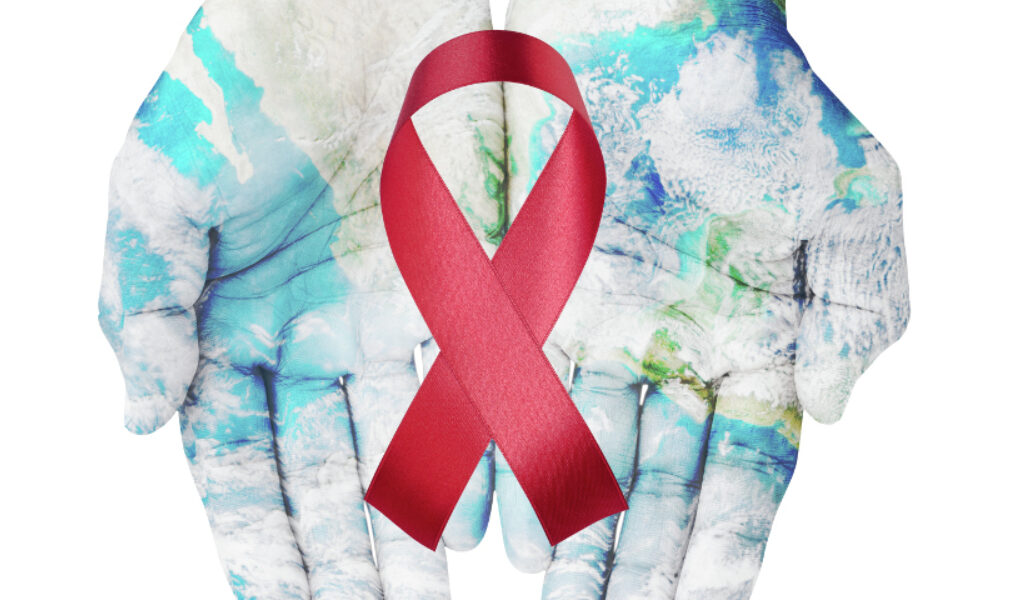The last several years have seen a dramatic shift in the HIV landscape in the country and specifically in Michigan. In September, San Francisco, long a bastion for those affected by the epidemic, reported just 221 new cases in 2017. The San Francisco Chronicle reported this was an historic low in new cases, but it also found that there were significant disparities in age, race and gender of those newly diagnosed. Of those new diagnoses in San Francisco, 60 percent were among people under age 40 — that's despite the vast majority of those living with HIV in the city being over age 50.
That decline reflects a broader national trend of reductions in new cases. In 2017, the Centers for Disease Control and Prevention reported that new infections of HIV dropped five percent nationwide. But it too has warned the epidemic continues to dramatically impact younger men of color who have sex with men. Also, transgender women have significantly higher rates of HIV infection and risk.
The Detroit Metro area reported 512 new cases of HIV in 2017, with 228 of those in the city of Detroit. Across the U.S. there were another 249 cases reported statewide in 2017.
Obscured by the numbers, however, are the issue of access to and adherence to medications and care. Science has shown that when a person living with HIV is successful in taking their medications, they attain what is called viral suppression. They become undetectable in blood tests, meaning there is so little viral replication occurring the tests can't find the virus in tests. The science shows that people who have reached suppression can't transmit the virus,
The U.S. and the United Nations Joint Nations Program on HIV/AIDS has set an aggressive goal of identifying 90 percent of people living with HIV, connecting 90 percent of those with the virus to medical care and treatment and virally suppressing 90 percent of those in care. It's called the 90-90-90 Plan.
While there are just over 16,000 Michiganders living with HIV, only 89 percent of them are suppressed according to the state. And those numbers vary dramatically based on geography. In Wayne County, specifically in Detroit, residents in have an 83 percent suppression rate while Genesee County has an 85 percent suppression rate and Ingham county has an 88 percent suppression rate.
Combine the lower viral suppression rates with lower access to Pre-exposure Prophylaxis medication and there starts a recipe for a continued epidemic. Worse, people of color and low-income folks in Michigan tend to have lower suppression rates and lower use of PrEP. This results in higher transmission rates with these communities.
With this information in mind here's the good, the bad and the ugly in relation to HIV in Michigan:
The Good
Michigan has a new governor rolling into office. Democrat Gretchen Whitmer won the office earlier this year and she has committed to increasing efforts to addressing HIV. This includes leveraging more federal funding and pushing for the ability to negotiate with pharmaceutical companies to reduce the costs of HIV prevention and treatment drugs provided through Medicaid.
Last year, during the campaign, Whitmer also committed to creating an assistance program to fund PrEP for those who can't afford it. Currently, once a person is infected with HIV, they qualify for the Michigan AIDS Drug Assistance Program, which is funded almost entirely through drug rebates, if they make up to about $64,000 as a single person. The program will pay copays for insurance coverage of HIV drugs, or if a person doesn't have insurance, it will pay for the drugs as well as blood tests related to HIV care.
Whitmer noted Washington and New York state have both created such programs for PrEP and she said she would explore that option for Michigan.
Also on the positive with a Democratic governor set to take office in January is a promise from Whitmer that she will work with State Rep. Jon Hoadley (D-Kalamazoo) on reforming and modernizing Michigan's HIV-specific criminal law. Currently, any person who engages in sexual penetration "however slight" without first disclosing their HIV positive status can be charged with a four-year felony.
Hoadley and HIV advocates argue Michigan's law ignores a key component of criminal activity: intent. Currently, a person does not need to have an intent to transmit HIV to be charged. In fact, the law is so broadly written that sexual activity, such as using sex toys, which doesn't transmit the virus is still criminalized.
Whitmer acknowledges the law has failed to help address the epidemic and said she would support Hoadley's legislative efforts.
State health officials have also fully integrated messaging for prevention and care services to include information about viral suppression and PrEP in prevention of HIV.
The Bad and Ugly
Michigan continues to mirror national data as it relates to racial disparities in new HIV diagnoses. Of the new cases identified in 2017, 79 percent were men and of those, 44 percent were black men. Two transgender people of color were also newly diagnosed with HIV in 2017.
On top of this, state health officials while quietly supporting a modernization of Michigan's HIV criminal law, have been pushing through legislation to dramatically reshape the landscape on how the state interacts with people living with HIV.
Legislation that passed the House earlier this year is expected to be taken up by the GOP-controlled Senate during the lame duck session. This legislation would remove prohibitions on the collection and keeping of the identity of persons identified as at risk partners for newly diagnosed persons. Current law prohibits local health departments from keeping that information beyond 90 days. But state health officials have worked to circumvent that law for nearly two decades.
First they used a state owned and run database that local health officials had access to at all times. That was called the HIV Event System and it tracked not only the identifying information of persons testing for HIV, but also those identified as at-risk partners of persons diagnosed with HIV along with those who already had HIV. The system has since been removed, but the state continues to circumvent the law by storing nearly the same data on a federal database outside of the state of Michigan. This database does not track identifying information about persons testing for HIV, but does track everything else the HIV Event System tracked.
In addition, state health officials are pushing for a revamp in the state's partner services law. Currently, those diagnosed with HIV had the right to decline partner services assistance from local health officials if they agree to contact sexual and needle-sharing partners. Once that has been done, health officials are supposed to cease contact with the person. But health officials want a blank check to continue pushing newly diagnosed persons for partner information on a regular basis.
State health officials, known as disease investigators, have historically had a contentious relationship with the LGBTQ community over the perception the investigators are judging persons living with HIV and their sexual and drug using choices. The partner service programming can make people feel like they are under a microscope and subjected to invasive scrutiny not given to other infectious and reportable diseases in the state.
Perhaps the most troubling move by health officials, however, is the use of genetic data collected by infectious disease doctors to determine care choices for persons with HIV. The test is a genotype test and tells doctors to which medications, if any, the virus a person has is resistant. Unbeknownst to most Michiganders living with HIV, the state has been collecting these genetic tests for years. They're kept in a database run by the CDC as well as a national database that is publicly available through the Los Alamos National Lab. The information on the Los Alamos database is de-identified.
But the data in the CDC database? That's identifiable and linked to a specific person. Health officials have taken to creating models of transmission, called clustering, which shows the interconnection of the various viruses in the state. Those clusters then become a target for enhanced prevention services, even if the people in the cluster are virally suppressed. Health officials have said people living with HIV have no right to withdraw from the program or their consent.
The program has been rolled out to groups of people mostly working in AIDS Service Organizations, but not necessarily living with HIV. Many HIV activists opposed the program because the data has the potential to be abused by zealous prosecutors, despite the fact genotype tests cannot be used to determine directionality of infection.










